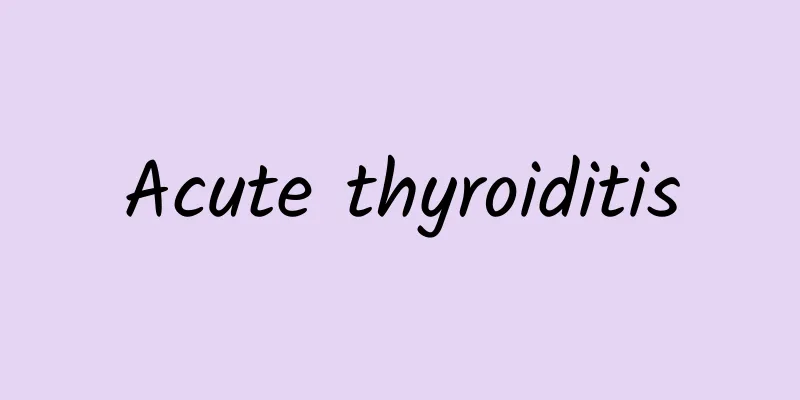Acute thyroiditis

|
Acute thyroiditis is a very serious disease. For such a phenomenon, we must participate in reasonable treatment in a timely manner, especially when acute thyroiditis occurs. If we do not participate in diagnosis and treatment in time, serious infection will occur. Therefore, we must understand the symptoms of acute thyroiditis in the early stage and treat it in time. When acute thyroiditis occurs, there is an acute suppurative infection in the thyroid gland of the body. Such diseases are caused by bacterial or fungal infections. Bacteria and fungi pass through the blood circulation, lymphatic channels, and adjacent suppurative diseases to harm the thyroid gland in the body and induce acute suppurative inflammation. The most important thing is that the spread of adjacent suppurative lesions in the body is a relatively common secondary infection phenomenon. The patient may have increased body temperature. More common in middle-aged women. There is a history of upper respiratory tract infection such as sore throat, nasal congestion, headache, and body aches 1 to 2 weeks before the onset of the disease. Sudden onset, with chills and high fever, enlarged thyroid gland, red and burning color, tenderness, pain behind the ear and back of the head, worsened by activity or swallowing. Severe cases may cause hoarseness, shortness of breath, and difficulty swallowing. If it becomes purulent, there will be swelling, pain and throbbing pain, and a fluctuating feeling may appear after the pus forms. Within a few days, the thyroid gland or goiter swells, with tenderness and pain that radiates to the ears and occipital area. Severe cases can cause compression symptoms such as shortness of breath, hoarseness, and even difficulty swallowing. Necrosis of glandular tissue and abscess formation can cause hypothyroidism. Cold compress is suitable for local use in the early stage, hot compress is suitable for use in the late stage, and antibiotics are given systemically. When there is an abscess, incision and drainage should be performed early to prevent the abscess from rupturing into the trachea, esophagus, or mediastinum. Treatment includes antibiotics and local incision and drainage. It is best to do puncture fluid and blood culture, and perform drug sensitivity tests, and then choose sensitive antibiotics, which will be more effective in eliminating bacteria. After a few days of thyroid inflammation, an abscess will form. Therefore, the thyroid abscess must be incised and drained to effectively remove the pus and control the local inflammation as soon as possible. Because the neck pain is obvious, some analgesics can be used, such as painkillers and salicylic acid preparations. We must understand the occurrence of acute thyroiditis. When treating acute thyroiditis, we must understand a good diagnosis and treatment measure. However, only by discovering it as early as possible and going to a regular hospital in time to participate in the diagnosis and treatment of our own symptoms can we guarantee a cure. |
<<: Is folliculitis contagious?
Recommend
What causes red nails?
If your nails turn red or other colors one day, s...
Eight tips for whitening and removing freckles to give you fair skin
The appearance of spots on the face is probably a...
Chinese patent medicine for treating tumors
Nowadays, the medical method of treating tumors i...
Why do I suddenly feel upset?
There are many things in life that can make us fe...
Symptoms of vocal cord damage in children, mothers must know
Children are most naughty when they are 7 or 8 ye...
Can tinea cruris be cured?
Tinea cruris is a common infection in our daily l...
What causes excessive sweating on the buttocks?
People sweat in different parts of their bodies. ...
Precautions after medical abortion and uterine curettage
Nowadays, many women do not care much about their...
The best part of the body for cupping to remove dampness
As we all know, dampness can make a person's ...
How to treat hearing loss? These few tricks work quickly!
The ear is the most important hearing organ of th...
Why is my urine cloudy? Causes of cloudy urine
We all know that normal urine is generally colorl...
Why do I keep peeing?
If you keep urinating, you need to rule out physi...
How to Get Rid of Acne
Acne, also known as pimples, is a very common ski...
What to do if your toes are rotten
In fact, toe rot is also a kind of athlete's ...
What is gastrointestinal rumbling?
Many people have had this experience. In daily li...









